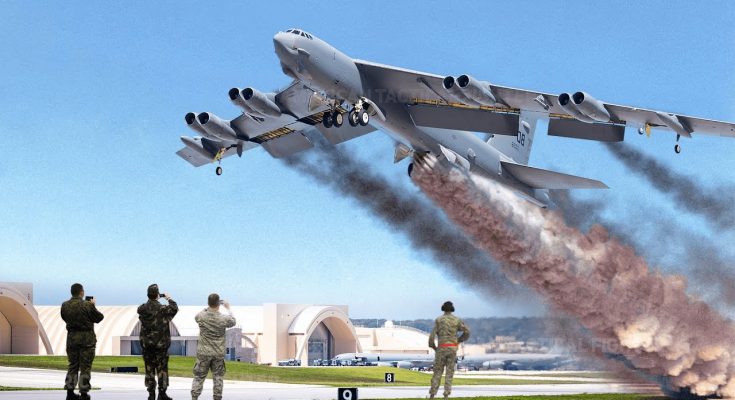The United States has begun deploying new B-52 bombers to European skies as part of a strategic move to bolster NATO’s defense capabilities and demonstrate its commitment to global security. This decision underscores the growing tensions in Eastern Europe, particularly in the face of Russia’s military activities and other geopolitical threats. The B-52 Stratofortress, a symbol of American air power, is one of the most iconic and versatile aircraft in the U.S. Air Force arsenal. Its deployment is expected to send a strong message of deterrence while enhancing NATO’s collective defense capabilities.
The B-52 Stratofortress: A Powerhouse of Flexibility
The B-52 has been a cornerstone of the U.S. Air Force for more than six decades. It is capable of carrying both conventional and nuclear weapons, with a range that allows it to project power over vast distances. The aircraft is designed for long-range missions and can carry a variety of payloads, including precision-guided munitions, nuclear bombs, and cruise missiles. The B-52 is also renowned for its ability to conduct a variety of missions, from strategic deterrence to close-air support. Despite being in service since the 1950s, the B-52 has undergone numerous upgrades, ensuring that it remains a key asset for the U.S. military.
The B-52’s deployment to Europe is particularly significant due to its ability to quickly reach hotspots and provide a visible deterrent against potential adversaries. It can operate in both peacetime and conflict scenarios, reinforcing U.S. power projection across the globe. In recent years, the aircraft has participated in numerous training exercises with NATO allies, enhancing interoperability and readiness in the event of a crisis.
The Strategic Context
The deployment of B-52 bombers to Europe comes at a time when tensions between NATO and Russia have been escalating. Russia’s actions, particularly its military presence in Ukraine and its broader regional ambitions, have raised concerns among NATO members. The alliance has been focusing on strengthening its eastern flank, especially as Russia continues to challenge international norms and threaten the stability of Europe.
The U.S. has been responding to these challenges by increasing its military presence in Europe. The B-52s are part of a broader strategy to demonstrate U.S. commitment to the defense of NATO and provide a visible reminder of the alliance’s nuclear deterrence capabilities. The aircraft’s long range and ability to carry advanced weaponry make it an ideal asset for such operations, and their presence is intended to send a strong message of resolve.
Enhancing NATO’s Defense Capabilities
The B-52 bombers will not operate alone. They will be integrated into joint operations with NATO forces, taking part in training exercises and strategic missions that aim to strengthen the alliance’s collective defense. These operations are designed to enhance interoperability among NATO members and ensure that the alliance is prepared for any potential conflict. The presence of American B-52 bombers in European airspace also serves as a deterrent to adversaries, signaling the U.S. and NATO’s readiness to respond to any threat to the security and sovereignty of alliance members.
NATO’s strategy is to present a united front in the face of threats, and the B-52 bombers are a key component of this effort. By showcasing the capabilities of its nuclear and conventional forces, NATO aims to reassure its members, especially those on the eastern borders with Russia, that the alliance is prepared to defend them if necessary.
Conclusion
The U.S. deployment of B-52 bombers to European skies represents a significant step in reinforcing NATO’s deterrence strategy. In a time of heightened geopolitical tensions, the presence of these aircraft is a clear indication of the United States’ commitment to the defense of Europe. Through this strategic move, the U.S. seeks not only to reassure NATO allies but also to send a powerful message to potential adversaries that any threat to the alliance’s security will be met with a robust response. As the security landscape in Europe continues to evolve, the B-52 bombers will play a crucial role in maintaining stability and deterring aggression.



